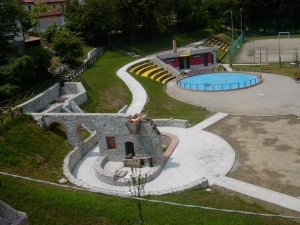Iron Route

In the 16th century, the Pistoia mountains were the first iron and steel hub of the Grand Duchy of Tuscany. The area was in fact rich in ferronatural energy, water and thick woods, which guaranteed the driving force and fuel for the iron-working factories. The Sabatini Ironworks in Pracchia still exhibits the machinery and tools of the time; built in 1543 by Cosimo I De' Medici, it was restored and opened to the public in 1992, and represents the place of work of the red itinerary of the Ecomuseum: for educational purposes, practical demonstrations of iron forging and beating are held there. In addition to the ironworks, the red itinerary also includes the Iron Centre and Educational Garden, both set up in Pontepetri by the Municipality of San Marcello Pistoiese, where a hammer, a vertical wheel and a mill wheel have been reconstructed, all working with water. Also in the garden there is an active hydraulic turbine that uses the water of the Maresca stream to provide enough electricity to light the entire educational path. The Mammiano Suspension Bridge was built in 1922 by the engineer Vincenzo Douglas Scotti of the Italian Metallurgical Society of Campo Tizzoro to allow the workers of Popiglio to shorten the long route to reach the ironworks in the opposite valley. It has steel cables anchored with massive chains to concrete bases and iron planks with metal nets. About 35 meters high at its highest point and 212.4 meters long, it is one of the longest pedestrian suspension bridges in the world and is now a very popular tourist attraction. [texts by the Tourism Service of the province of Pistoia]

 Italiano
Italiano